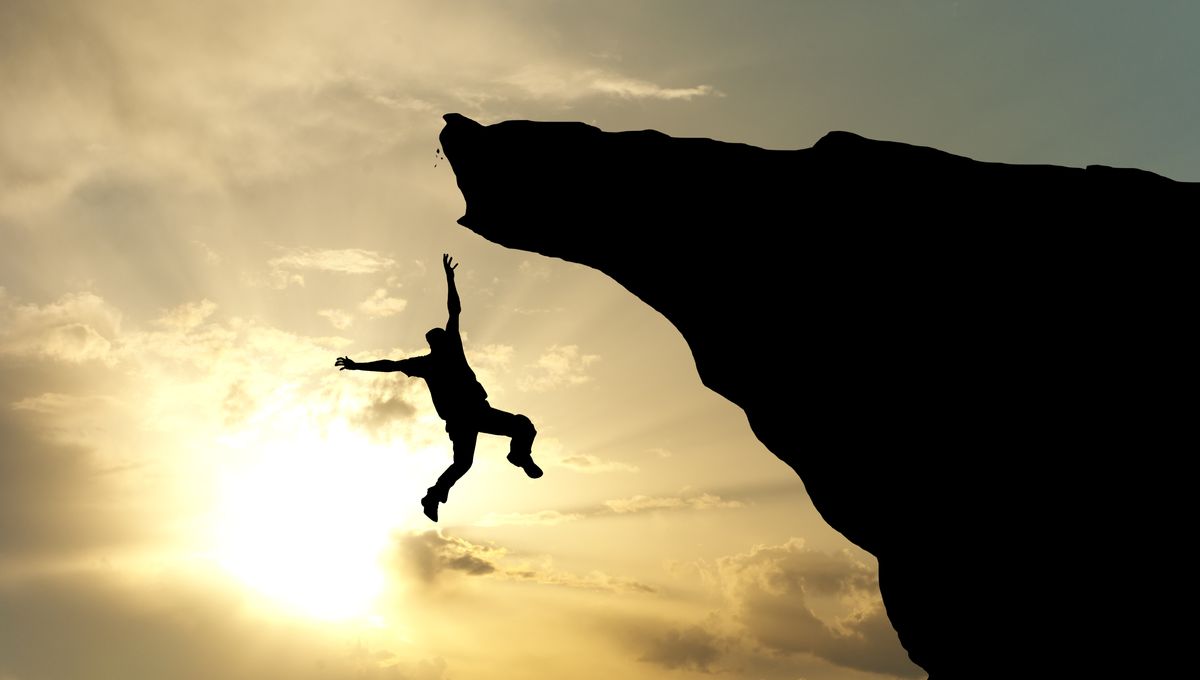
History is filled with reports of people surviving “unsurvivable” falls from great heights, whether it be from rock climbing accidents, adventurous stunts, or basic misfortune. So how did they do it? We consider the factors that may increase your chances of survival.
Height from the ground
The first thing to think about is how far you’ve fallen. One rock climber survived a fall of more than 90 meters (296 feet) with pretty severe injuries, but the world record is held by Vesna Vilović. The flight attendant survived a fall of more than 10,160 meters (33,333 feet) after the plane she was working on exploded. This remains the highest survived fall without a parachute.
Something else to consider is how fast you are falling and how quickly you stop. “Overall, we say that if somebody falls from 48 feet [15 meters], which is about four stories, 50% of them will die,” Dr. Demetrios Demetriades, a professor of surgery at the Keck School of Medicine of the University of Southern California, told Live Science. “If someone falls more than 60 feet [18 meters], this is usually lethal, and it is extremely unlikely, or a miracle, if a patient falls from higher than 80 feet [24 meters] and survives.”
Reaching terminal velocity means the air resistance is equal to the gravity acting on the falling person, keeping them falling at the same speed. According to the Fédération Aéronautique Internationale, in a stable belly-to-Earth position, terminal velocity is about 200 kilometers per hour (120 miles per hour).
Surface
Part of the reason Vilović survived could be attributed to the fact she landed on snow.
Falling from anywhere onto solid ground is always going to have a significantly more serious outcome. Falling onto water might sound better, but after a certain height it has an enormous impact on the body.
A tech report by the Civil Aerospace Medical Institute in 1965 said of falls into water, “It was found that the most survivable body orientation, by a factor of five to seven, is a feet-first impact in which critical velocity for human survival was approximately 100 [feet, or 30 meters, per second]”. Professional cliff divers fall/dive from a maximum height of 27 meters (88.5 feet) with scuba divers in the water but always land feet first.
Landing in something like a tree might break a few limbs on the way down but could help absorb most of the impact, acting like a barrier before you come to a complete stop.
All about the landing
Surviving a fall also comes down to angle. Vilović was pinned by a food cart to the main body of the plane when she fell, landing at a favorable angle. Landing on your head is clearly the worst way, while landing on your feet or side might just save you.
Landing on your side might be the best way to survive a fall, as Sean Hughes, professor of surgery at Imperial College London, told the Guardian. It doesn’t take much of a fall to cause damage. “From a height of 3 [meters; 10 feet] you could fracture your spine,” Hughes said. “At around 10 [meters; 33 feet], you’re looking at very serious injuries.”
A roundup
If you have to fall from a big height, here’s the roundup. Don’t land on your head, try and land either on a slope or on something at least a bit forgiving, and ideally don’t reach terminal velocity and then come to an abrupt halt. Reducing the distance you fall is probably going to have the most important influence on the outcome. If you do manage to grab on at the last second, you could have evolution to thank for putting the brakes on.
Stay away from heights, folks!
[H/T: Live Science]
All “explainer” articles are confirmed by fact checkers to be correct at time of publishing. Text, images, and links may be edited, removed, or added to at a later date to keep information current.
Source Link: How To Increase Your Chances Of Surviving A Big Fall